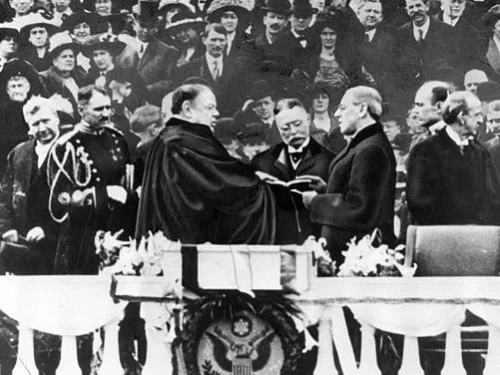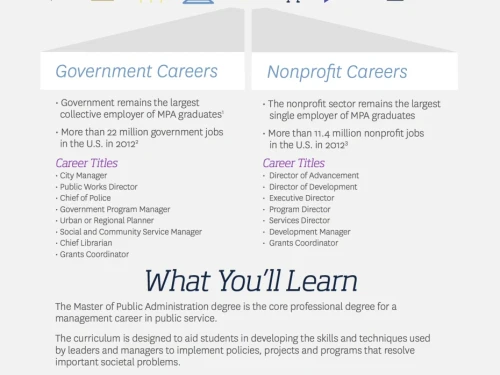Public Administration
Kent State’s Master of Public Administration program equips future leaders with the skills to drive meaningful change in public, nonprofit, and private sectors. Her, dive into topics like policy development, nonprofit management, and public service leadership while exploring career pathways and insights into the evolving field of public administration. With NASPAA accreditation and a focus on practical impact, Kent State prepares graduates to excel in roles that shape communities and governance.
Related Blog Posts
In a campaign event at Madison Square Garden in 1912, future President Woodrow Wilson said something that could be considered a mission statement for his life’s work: “There is no cause half so sacred as the cause of a people. There is no idea so uplifting as the idea of the service of humanity.”1 After living a life devoted to the public, both in practice and as a scholar, Wilson was uniquely qualified to discuss matters of public service. Twenty-six years earlier, Wilson had published “The Study of Administration,” an essay that served as the foundation for the study of public administration, and which caused Wilson to be enshrined as the “Father of Public Administration” in the United States.
Learn about NASPAA accreditation and why it’s an important accreditation to have for most MPA programs.
Imagine a town that wants to improve access to its public buildings. Theoretically, the citizens of the town could appeal to their elected officials for the change and maybe vote on a ballot measure. Once that measure has passed, officials could craft a policy addressing the need for improved access, and then allocate the funds...and then things get a little tricky.
It can be easy to take for granted the comforts that most of us have in our homes. Indoor plumbing, running water, heat, a safe place to sleep, food—even the people fortunate enough to enjoy these amenities will periodically fall ill. Yet they can maintain their cleanliness, get adequate rest and most likely have access to reputable health care. Now, take all of that away. Suddenly, an alarming range of bodily and psychological impediments can arise.
It should come as no surprise that over 80 percent of adults in the United States use the internet.1 In fact, over half the world’s population owns a smartphone—a technology that relies exclusively on broadband for many of its primary functions.2 So, with the proliferation of internet usage being what it is, you’d expect that a similarly high percentage of citizens have access to affordable and reliable internet.
It’s no secret. The public’s confidence in the government is on the decline. In fact, a stifling 76 percent of citizens believe that political corruption is a critical problem facing us today. According to Kent State University professor Mark Cassell though, “When we talk about failed states, what we’re talking about is failed administrations.”
A Master of Public Administration (MPA) degree helps prepare administrative professionals for advanced positions within the public sector, government and nonprofit organizations. Explore the infographic below to learn how an MPA can help pave the way to more senior job opportunities.
The paths of those who have arrived in public administration careers are varied and sometimes unpredictable. Often, the professionals who serve the public best are the ones who never necessarily saw themselves fulfilling those roles to begin with.







